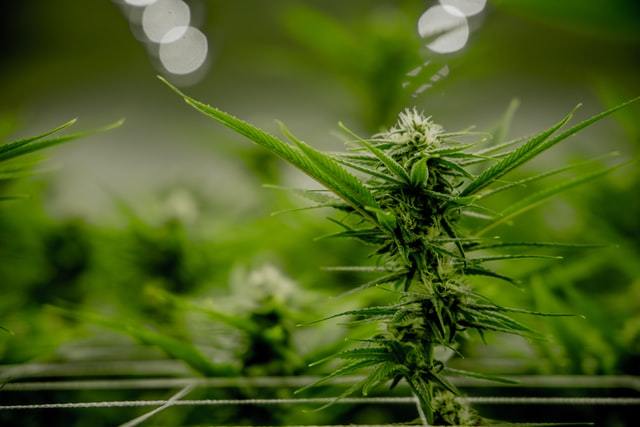Two cultivation techniques form the basis of most indoor growing methodologies: high-stress training (HST) and low-stress training (LST). As the names suggest, one method puts the cannabis plant under significant stress, while the other does not.
Low-stress training is the more approachable technique, and even an 'untrained' grower can create immediate improvements to yield and cola development.
Low-stress training is about careful, gentle plant bending. Many farmers have called LST the bonsai treatment for growing marijuana, where the grower pulls individual branches in different directions to manipulate the final form of the plant. LST is suitable for everyone, whether this is your first crop or 100th.
The Benefits of LST
- Simple technique and easy to learn.
- It does not create significant stress for the plant, which would impact growth or future harvest.
- Controls the height, useful in both indoor and outdoor grows
- Creates digger yields by expanding the canopy and increasing cola development along the stem.
- Applicable across most cultivation methods (hydro, soil, autoflower, indoor, outdoor, etc.).
The Basics of Low-Stress Training (LST)
LST's premise is to control height and improve yields without adding undue stress to the plant, which could damage or stunt growth. Low-stress training can theoretically happen at any time up until switching to flower. The earlier it's implemented, the better the results and the lower the impact on the plant.
If you leave cannabis to its own devices, it naturally grows a single stem (and a primary cola), with several smaller colas and side branches bushing out along this main stem. LST is a plant bending technique that uses hooks, wire, or other gentle control systems to force the plant along a horizontal axis, instead of its more natural vertical one.
These new horizontal branches widen the canopy space and allow for secondary bud development. While these will never be as large as the primary flower, these secondary colas are still substantial and increase the final yield.
Growers often combine LST with other techniques, such as topping, lollipopping, and SCROGing. It's suitable for indoor and outdoor marijuana operations, but it is most commonly used by indoor growers to manage restricted grow spaces like within a smaller AC Infinity grow tent.
LST is an excellent way to ensure your plants stay below the burn zone of intense indoor lights. It also works for both soil or soilless growing mediums. Technically even auto-flowering strains can be trained using this technique. However, because their flower cycle is automatic, it can be challenging to achieve the desired canopy development before bud formation.
How to LST Cannabis for Better Yields
- The earlier you begin, the better for the health of the plant, and the more control you'll have over the direction and shape fo growth. Technically though, you can use LST until a few weeks into flower. To begin with a seedling or clone, you can start as early as the second or third nodes of leaf growth.
- Standard LST products include garden U-hooks, handmade wire hooks, string, and other material. U-hooks pin branches directly to the soil, while wire hooks and string need to secure to the outside edge of the pot, a bamboo stake, or another sturdy option.
- Gently bend over the branch, taking great care to prevent undue damage. Using your wire or hook, secure the stem in place. You may have only one branch at this stage, or you may have several if you have already topped the plant.
- Allow the plant to recover for a week or so before going back in for round two. In the days immediately following the first round of LST, the marijuana plant will reorient itself towards the LED lights. Eventually, it will spread out into the new space, to develop a more extensive canopy.
- Once new growth has two to three nodes, you can go back in for round two of LST. Using the same techniques, secure the new side branches down and in the desired direction. The aim is to force the plant to grow wider instead of taller.
- Repeat steps four and five until you have achieved the core desired height, shape, canopy development, or stage of growth.
- Supplement with other techniques (like topping to encourage more secondary development, or coaxing through a SCROG netting).
What Products Do You Need for Low-Stress Training?
As with anything related to cannabis cultivation, there is always a debate between growers about the best technique and the best tools for the job. It's no different with the LST technique. There are many ways and products used across the industry which achieve the same basic results.
While there are products specifically designed for LST, there are many other DIY options that work just as well. The most common products growers use are garden U-hooks and rubber-coated wire (of the gauge used for coat hangers). With a gentle hand, these will not damage the plant or cut into the branches as the plant adjusts.
Other growers reach for pipe cleaners, which are less robust, but help reduce the risk of damage to the stem. Of course, you can always use string, but most string tends to cut into the plant flesh. Over time it may do more harm than good.
LST: A Simple Technique to Increase Yields
LST may be one of several different plant bending techniques, but it's a straightforward one to apply in your personal indoor grow room. No matter the set up (indoor or outdoor, autoflower or not), you can control the direction and shape of plant growth to improve yields. Plus, you can do so with little to no experience or training.
If you remain unconvinced about the benefits of LST, why not try a test to weigh the results? The difference in yield between an LST versus an untrained plant may surprise you come harvest time.





